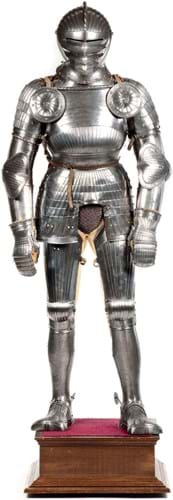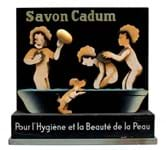The Pennsylvania auction house had estimated it at $75,000-150,000 but after interest from collectors round the world it ended up selling for $220,000 (£169,230).
The armour was part of the 219-lot ensemble of early Pennsylvania and European antiques and 18th century firearms known as The Susquehanna Collection, assembled over a 40-year period, which garnered a total of $2.3m including premium.
The composite armour (one assembled from elements that came from different sources but were of the same period) was put together by Dr Bashford Dean (1867-1928). He was the first president of the Arms and Armor Society and the first curator of arms and armour at the Met in New York.
It is of Maximilian type, dates to c.1510-20 and is very similar to one in a book published by the Met titled Of Arms and Men: Arms and Armor at the Metropolitan 1912-2012.
The suit includes a closed helmet with visor and backplate struck with a Nuremberg mark. Most of the surfaces are engraved with ropework edges.
Some elements come with their own distinguished provenance such as the breast, backplate and taces which are from the armour of Prince Carl of Prussia.
The assembled armour has a provenance back to 1928, to an American Art Association auction in New York. It was auctioned in 1943 by Parke-Bernet Galleries from the Estate of Harriet Martine Dean (Bashford Dean’s sister), then belonged to the dealer Joe Kindig Jr. Following further auction appearances at Christie’s, it was acquired in 2002 via an agent by Morphy’s vendor.
Havana highlight

An 18th century powder horn engraved with a map of Havana and an inscription. It sold for $41,000 (£31,540) at Morphy Auctions.
Also included in the Susquehanna collection was an ensemble of 18th century powder horns, among which was a profusely decorated example which sold at the upper end of its estimate for $41,000 (£31,540).
It is engraved with a map or plan of Havana that includes landmarks and sites such as Mooro (Morro) Castle, Shepherds Battrey (Battery) and New Store. The main inscription reads The City Of Havana Illuminated At The Embarkation Of The British Troops July The 7th 1763.
The horn is attributed to Peter Robertson, a corporal in the 9th British Regiment posted in St Augustine, Florida, during the French & Indian War. He is presumed to have been a participant in the Battle of Havana, 1762-63.
The sale took place on January 16 and the buyer’s premium was 23%.














